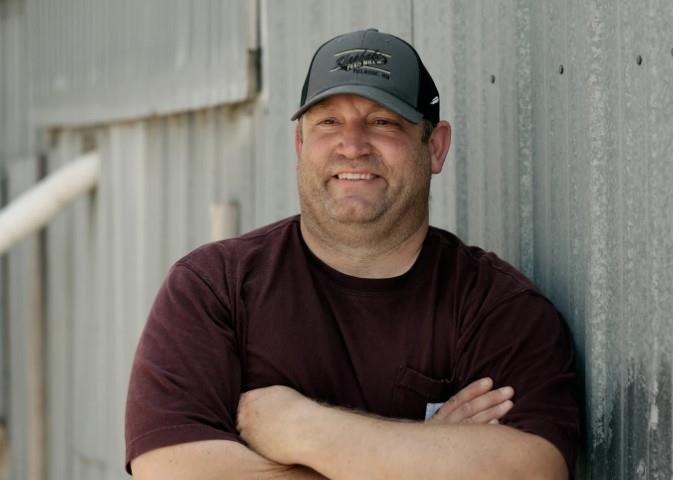“It's always been not really a great living, but kind of what you like to do,” Peterson said. “If my wife didn't have a good job, we couldn't have stayed on the ranch. For sure I would have to go get a better job. The cow prices just have never been good enough to sustain a family.”
He wonders about his kids’ future.
“I don't see how they can live on the ranch without doing other jobs and making a living that way,” Peterson said.
Average price of steaks, ground beef in average U.S. City
Average consumer price (cost per pound/453.6 grams) of all uncooked beef steaks and 100% ground beef in the average U.S. city from 1998 to 2022.

Rise of the big beef players
Beef cattle operations account for more than a third of U.S. farms and ranches, making it the single largest segment of the nation's agriculture. In Montana, cattle and calves are the commodity food produced the most, generating more than $1.5 billion in cash sales in 2020.
According to the U.S. Department of Agriculture, the gap between the retail price for beef and the price cattle producers earned is the largest it’s ever been.
According to the White House, a half century ago ranchers received 60 cents on every consumer dollar spent on beef. Today, that’s dropped to about 39 cents on every dollar.
“Many, many cattle producers are unable to receive even their cost of production from the marketplace,” said Bill Bullard, a former rancher who now heads an advocacy group, the Ranchers-Cattlemen Action Legal Fund, based in Billings. “And that explains why we've lost so many cattle producers and why we continue to do so and why we've lost so many feedlots”
He says the prices paid to ranchers for their cattle have stagnated over the last decade, while operating costs have soared.
“From the time that I was in the industry in the 1980s we've lost over half a million beef cattle operations, that means we've lost ranches, 43 percent of them just in the past few decades,” Bullard said.
He blames the wave of corporate consolidation that swept the beef industry since the 1980s.
That decade marked the start of Ronald Reagan’s presidency and new push for deregulation.
During this time, the government relaxed enforcing antitrust laws and didn't challenge mergers, paving the way for bigger companies and the rise of big beef players.
Annual ranchers' share from 1970-2020
Annual average of ranchers' share -- beef’s value to the rancher divided by its retail value -- from 1970 to 2020.

The biggest of these players are meatpackers. They make up the final step in the beef supply chain before a steak shows up in a grocery story. Ranchers raise the cow, feedlots fatten, meatpackers slaughter and ship.
Since the 1980s, four companies increased their share of the meatpacking market from 36 percent to 85 percent, according to the U.S. Department of Agriculture.
Today, the four big packers are Tyson, JBS, Cargill and National Beef. Since they control the majority of the market, they can act as a bottleneck in the supply chain.
“The reason I think that we have such consolidation in the industry is because they can deliver beef products at such a lower cost than a smaller facility could, so there have been economic forces that have driven toward that type of consolidation,” said Eric Belasco, an agricultural economics professor at Montana State University who focuses on livestock.
Some ranchers argue this concentration allows meatpackers to formulate contacts that act as gatekeepers to the marketplace, deciding how much cattle cost and where they are sold.
“On the other hand, those formula prices are kind of there, again, to help kind of lower the cost of that transaction so that beef can be processed cheaper,” Belasco said.
Belasco said there’s no empirical evidence showing that the four big meatpacking companies are manipulating the prices, but he can understand the skepticism when this kind of concentration is seen in the marketplace.
Government’s changing view
Earlier this year, President Joe Biden announced efforts to increase enforcement of the Packers and Stockyards Act, a federal law aimed at regulating fair trade in the beef industry.
The White House also announced that it would invest $1 billion to expand independent meat processing capacity.
In May 2020, the Department of Justice announced that it is investigating the four major packers for possible violations of antitrust laws.
Gov. Greg Gianforte and the USDA recently came to an agreement that would allow certain processors to ship state-inspected meat products out of state. This allows producers who are already selling directly to consumers to expand their customer base and expand their capacity beyond state lines.
Congress is also looking into the issue.The Cattle Price Discovery and Transparency Act is co-sponsored by Sen. Jon Tester and Sen. Steve Daines. It would mandate a certain level of negotiated cash trade by large meatpackers.
“I think it will help because it will stop the big packers from being able to manipulate the cash price, which if manipulated the way they want it, will force all prices down,” Tester said during an interview with MTPR.
In a statement, Sen. Daines said the bill would “ensure the largest packers can no longer manipulate the market.”
But some say this bill would go against economic forces.
“If you did require more negotiated transactions, then you might see that higher transaction cost in a slightly more elevated consumer price,'' MSU economist Belasco said.
Some cattle groups aren’t on board with the bill backed by Tester and Daines.
“If you regulate how a processor can buy cattle, you're regulating how producers like myself can sell cattle,” John Grande, the vice president of the Montana Stockgrowers Association, said. “And we don't want to limit the options that our members have for selling cattle."
He says the association does support some parts of the bill, such as increasing transparency on how cattle are marketed.
Click here to see more...